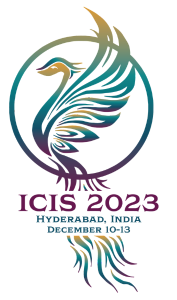Loading...
Paper Number
1192
Paper Type
Completed
Description
A new generation of information systems based on artificial intelligence (AI) transforms the way we work. However, existing research on human-AI collaboration is scattered across disciplines, highlighting the need for more transparency about the design of human-AI collaboration in organizational contexts. This paper addresses this gap by reviewing the literature on human-AI collaboration through the lens of human teamwork. Our results provide insights into how emerging topics of human-AI collaboration are connected and influence each other. In particular, the review indicates that, with the increasing complexity of organizational settings, human-AI collaboration needs to be designed differently, and team maintenance activities become more important due to increased communicational requirements of humans. Our main contribution is a novel framework of temporal phases in human-AI collaboration, identifying the mechanisms that need to be considered when designing them for organizational contexts. Additionally, we use our framework to derive a future research agenda.
Recommended Citation
Braun, Marvin; Greve, Maike; and Gnewuch, Ulrich, "The New Dream Team? A Review of Human-AI Collaboration Research From a Human Teamwork Perspective" (2023). ICIS 2023 Proceedings. 7.
https://aisel.aisnet.org/icis2023/techandfow/techandfow/7
The New Dream Team? A Review of Human-AI Collaboration Research From a Human Teamwork Perspective
A new generation of information systems based on artificial intelligence (AI) transforms the way we work. However, existing research on human-AI collaboration is scattered across disciplines, highlighting the need for more transparency about the design of human-AI collaboration in organizational contexts. This paper addresses this gap by reviewing the literature on human-AI collaboration through the lens of human teamwork. Our results provide insights into how emerging topics of human-AI collaboration are connected and influence each other. In particular, the review indicates that, with the increasing complexity of organizational settings, human-AI collaboration needs to be designed differently, and team maintenance activities become more important due to increased communicational requirements of humans. Our main contribution is a novel framework of temporal phases in human-AI collaboration, identifying the mechanisms that need to be considered when designing them for organizational contexts. Additionally, we use our framework to derive a future research agenda.
When commenting on articles, please be friendly, welcoming, respectful and abide by the AIS eLibrary Discussion Thread Code of Conduct posted here.



Comments
04-Work